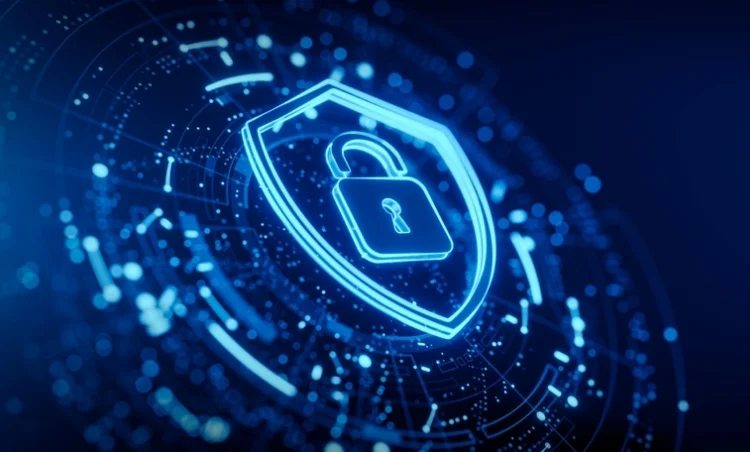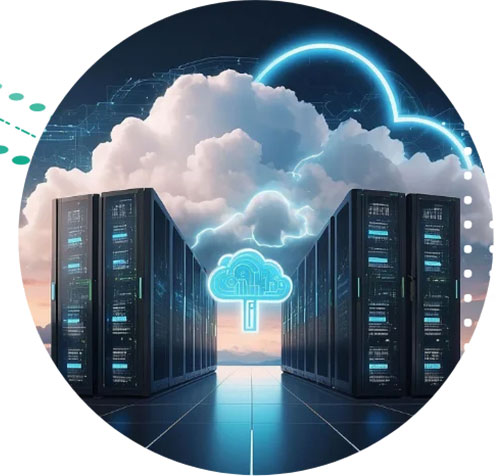Cyber Security for Nonprofits: Lessons from Past Cyber Attacks
Non-profit and charitable organisations are facing an increase in cyber security challenges. Often with limited resources and a wealth of sensitive data, nonprofits have become prime targets for cybercriminals.
Choosing the right Managed Wi-Fi provider- Key Considerations
In today’s hyper-connected world, a stable and efficient Wi-Fi network is essential for enterprises to operate seamlessly. A robust and dependable Wi-Fi network is the foundation of success for any thriving business, facilitating seamless employee communication and offering a platform for engaging with customers.
Managed Wi-Fi providers offer a range of services, designed to make your Wi-Fi network hassle-free and optimized for performance. But how to choose the right managed Wi-Fi provider? In this article, we will explore the key factors you must evaluate when making this decision.
Understanding your core requirements
Before beginning your search for a managed Wi-Fi provider, it is crucial to understand your core requirements. It might depend on your business type, size, number of devices connecting to network, bandwidth & coverage needs, security demands, compliance, and more. Here is a list of essential features and services your potential managed Wi-Fi provider must offer.
- Performance
The foundation of successful business operations is a stable and high-performance Wi-Fi network. When evaluating managed Wi-Fi providers, prioritize reliability and speed. Downtime or slow connectivity can disrupt operations and negatively impact potential lead interactions. Ensure the provider can offer Service Level Agreements (SLAs) with guaranteed uptime and performance levels that meet your business needs.
- Scalability
One of the most critical considerations when choosing a managed Wi-Fi provider is scalability. Your network needs may change over time as your business grows or usage patterns evolve. Look out for a partner that can accommodate scaling up or down without significant disruptions. Ask potential providers about their scalability options and whether they can adapt to your future requirements.
- Reliability and Redundancy
A reliable Wi-Fi network is a non-negotiable requirement for businesses. Downtime can lead to lost revenue, frustrated customers, and decreased productivity. When evaluating managed Wi-Fi providers, inquire about their network reliability and redundancy measures. Look for providers with a track record of minimal downtime and robust failover solutions to ensure uninterrupted service.
- Security
Cybersecurity threats are constantly evolving, and your network must be protected from potential breaches and attacks. Make sure your provider offers robust security measures such as firewall protection, intrusion detection, and encryption. Additionally, inquire about their approach to security updates and patches to stay ahead of emerging threats.
- Quality of Service (QoS)
Different devices on your network may require varying levels of bandwidth and priority. For example, video conferencing and voice-over-IP (VoIP) calls demand low latency and consistent bandwidth. A managed Wi-Fi provider that offers Quality of Service (QoS) allows you to prioritize traffic according to your needs, ensuring a seamless user experience for critical applications.
- Network Management and Monitoring
Effective management and monitoring are essential for maintaining a healthy Wi-Fi network. Your managed Wi-Fi provider should offer robust tools and platforms that allows you to monitor network performance, troubleshoot issues, and make necessary adjustments. Look for providers that provide real-time visibility into your network’s status and offer proactive support to address potential problems before they impact users.
- Support and Service Level Agreements (SLAs)
Consider the level of support your managed Wi-Fi provider offers. What are their service level agreements (SLAs)? Do they provide 24/7 customer support? Can they respond quickly to network issues? Clear communication and reliable support are crucial, especially during network emergencies. Ensure that provider support offerings align with your business needs and expectations.
- Cost and Pricing Structure
Cost is undoubtedly a significant factor when choosing a managed Wi-Fi provider. Some providers might charge based on the number of devices connected, while others may have data usage-based pricing. Make sure you are aware of any potential hidden fees or overage charges and choose a pricing model that aligns with your usage patterns.
- Compatibility and Integration
Consider your existing technology infrastructure when selecting a managed Wi-Fi provider. Will the provider’s solution seamlessly integrate with your current systems, such as point-of-sale (POS) systems, security cameras, or other IoT devices? Compatibility and integration capabilities can significantly impact the efficiency and effectiveness of your network.
- Reputation and Reviews
Finally, research the reputation and customer reviews of potential managed Wi-Fi providers. Online reviews and testimonials from current clients can provide valuable insights into a provider’s performance, customer service, and overall satisfaction. Additionally, inquire about case studies or references to gain a deeper understanding of how the provider has helped businesses similar to yours.
Sify Edge Connect: One-stop Solution for your Managed Wi-Fi needs
Sify Edge Connect is a comprehensive suite of services involving Edge connect Advisory and Implementation services combined with wireless management and intelligent edge analytics. It is a fully managed secure wireless platform that integrates IT, OT, and people. Edge Connect offers a seamless expansion of its core services to edge devices while delivering centralized management for streamlined operations, infrastructure near the end-user for reduced latency, and expert management of policies for data protection.
A few salient features of Sify’s Edge Connect are:
- Cloud-based centralized management platform
- Controlled Internet access to guest users with GIS mapping
- Highly scalable and resilient
- Pan India deployment & support
- Service-based model with end-to-end ownership
Wrapping Up!
Choosing the right managed Wi-Fi provider is crucial decision that can impact your business efficiency, security, and customer satisfaction. By carefully understanding above factors, you can make an informed choice that aligns with your specific needs and goals. A well-chosen managed Wi-Fi provider will ensure a reliable wireless network and empowers you to focus on what matters most while growing your business and serving your customers.
Boost your network edge for all-round digital transformation with Sify’s Edge Connect now!
Human errors is now the top threat for information security in organizations
A chain is only as strong as its weakest link. In an enterprise environment, it is often human errors that create the biggest risks. This fact is corroborated by many studies, and more than those, by many outages and episodes. Whether it is ignorance or wilful data theft, the risk that enterprises face from employees and disgruntled ex-employees is as big as (if not bigger than) external cyber threats or APTs. While ignorance has only one reprieve- training and policy enforcement, deliberate thefts can be more difficult to handle, and will need tools as well as stronger security infrastructure tools in place.
In January 2015, P&G USA filed a suit against 4 Gillette employees, for stealing and sharing corporate information with direct competitors. This is a classic case of people risks with sensitive corporate information. In another recent report on a study by Ponemon Institute, employee negligence was identified as the top threat for information security in healthcare organisations. How do CISOs identify a high risk behaviour employee? Also, how do IT organisations fight ignorance and negligence in employees to secure data, to the maximum possible lengths?
Here are some ideas on how to do it…
1. Identify careless employees, increase risk awareness- Tighten up Policies
Simple carelessness on the part of an employee-like forgetting to close a portal when not using it, using weak passwords, allowing unauthorised access to information and the most common- forgetting a mobile in a cab- can cost a company millions in terms of revenue. It can also turn back years of hard work for a market reputation or creation of strategy.
The only solution is constant training and creation of awareness about the risk careless behaviour can carry. Making compliance stronger and more strictly enforceable could help here. Creating clear policies of what is mandatory, at any cost, also helps. Once clear cut guidelines are in place, screening is easier and even re-screening isn’t such a cumbersome task any more.
All access levels need to be defined, especially for business critical systems and data. Strong encryption tools need to be in place, and authentication needs to be a non-compromiseable exercise. Unwanted devices, sites and applications usage needs to be regulated as well. Constant training needs to be in place for cyber security awareness, so employee understand the impact of even a single wrong click that opens a malware laden site. Opening unauthenticated sites, sharing passwords, carrying sensitive information in an unencrypted form- everything needs to be regulated, and the employees made aware of the risk- over and over again!
2. Mobility Led Risks- The rights tools in place
While enterprise mobility cannot be avoided in almost all enterprises, it is one of the highest reasons of data theft and loss. Studies indicate that almost 68% of all global organisations have faced a security threat from employee owned mobile devices.
Every enterprise needs to have tools in place to prevent this risk from blowing into a full outage. Again, a clearly defined BYOD policy is a critical part of this plan. Monitoring personal owned devices, encrypting data before access, are some processes that should be strictly enforced. Security solutions for isolating corporate data and encrypting it are available, and should be used.
3. Disgruntled employees- screening and rescreening would help
While employee background screening is almost mandatory for every organisation, sometime it is just not enough. In many cases, crucial facts about an employee can be missed. In addition, a dissatisfied or frustrated employee is also a threat- and specially one who knows it will be easy to walk away without anyone identifying him or her as the cause of a breach. They will have the satisfaction of causing harm to the company!
For this kind of attitude, a single screening while hiring may not be enough- follow up screenings and re-screening is required. Companies that do not insist on rescreening at regular intervals, expose themselves to threats of all kinds. Having a regular follow up on every employee’s background is an exercise that could probably detect a malignant element in the people strength of the company, which could be the fore-alarm, needed to step up security or deal with it right away.
4. Train and Update- Constantly
There are innovations in tools as well as applications for IT security, as with other technologies, on a rapidly growing basis. Every single threat is another step up for data on risk, and every time this should be documented and shared.
Every enterprise should keep abreast of these innovations, and ensure all employees are trained on a constant basis. By maintaining an updated list of risky behaviour, and the circumstances that lead to a breach, a training manual can be created. Employees need to be regularly trained for what to be cautious about and how to handle a threat. Clearly articulating the ground rules and elaborating on the consequences of the situation will certainly create a culture of security awareness in any enterprise.
Summary
While constantly evolving security technologies are creating updated tools to fight IT security, the single wrong action of an employee can undo the best of guards and checks. Every enterprise needs updated information on these tools, and needs to ensure every employee knows how to NOT be a risk. The education, training and awareness about risky behaviour are essential.
Also essential is the policy to make this awareness mandatory, these rules completely enforceable and the training a part of the corporate culture. While technology and tools can provide the ammunition to prevent breaches, the human element needs enterprise focus as well!
Enterprise Policy Vs Technology – are your people the biggest security risk?
According to a study by Intel in September 2015, almost 43 % of all data breaches were due to insider breaches (half being intentional). Threats perpetuated by disgruntled employees form an overwhelming number in these, especially in the Asia pacific region, where it is the second largest cause of all security breaches.
But despite such staggering figures, very few organisations or IT employees take the insider threat seriously- as low as 20% in the US market. A recent report by Ponemon says that in 2015, while insider attacks weren’t the biggest cause of security breaches, they caused the most damage- about USD 144,000 per instance!
Why?
Globally, very few organisations seem to have a clearly written policy that ensures employee education or affirmation about maintaining security of organisation data. If nothing else, it would help in increasing awareness of what might be dangerous, and lay down the processes for the right way of handling sensitive data!
One of the things this policy needs to define is regulate the privileges that trusted operators have- because they most often have the opportunity to cause most damage. Since they have the privilege to perform any process on critical systems using critical data, they could also, inadvertently or deliberately, be the biggest threat!
Most organisations confuse trust with granting unauthorised access to data for any employee and that has cost many companies dear! A balance between empowering an employee, and access control needs to be in place. In a vast majority of cases the unauthorised access comes from inadvertent sharing or passwords or access to critical data. What’s needed is a strict control on access. But that’s where the challenge lies- overlapping roles and inconsistent entitlements. But even more than that, is the poor governance process that keeps the backdoors open for security policy enforcement. The reason is, very often, that most organisations themselves are unaware of where their critical information is stored. It then becomes difficult to prevent inappropriate transmittal or access in the first place! And in most cases, a company’s reaction to a breach is reactive. There is hardly any attempt for predictive responses. There is almost never any system or policy in place to identify at risk accesses or individuals, so an attack may be pre-emptive or predicted.
Any policy that is to regulate data access to insider threats needs to follow some definitive guidelines. Some permissions and capabilities of employees need to be clearly regulated. These could be:
Data Classification
In order to be able to protect critical data, it first needs to be classified as critical. Understanding the consequences of a leak, an organisation needs to classify information at various levels of criticality and then work on ensuring the various security policies that confirm to each level of protection it needs. The data could include customer data, financial or market data or systems information. Each of these will have a cost attached, and access policies need to be in place for all. In addition, the security algorithms need to be clear on who can access to what levels- read, delete, copy or use in any other manner.
Privileged Identity and Passwords Management policy- a Must
In most organisations, the security and IT admin teams have access to almost all data, but with passwords. In some orgs, leadership and stakeholders are also given access. Such privileges need to be monitored by technology tools as well as policy enforcements. Who gets to see and do what, or Privileged Identity Management, has to be clear and simple but non-compromisable. It should enable regulation of multiple accesses to critical data.
Often many leadership level stakeholders share passwords and authorisations that could compromise key data or systems of a company. A policy that lays down the terms of clear privileged Identity Management can control the risks associated with this multiple usage of passwords and thus, the risk.
RBAC
In most organisations, privileges accesses are all or nothing accesses, often allowing more privileges than a person needs. A regulatory policy should be able to change that, and reduce the unnecessary risk to key data and systems information. Policies governing user entitlements need to be a strict enforcement in every organisation.
Fraudulent Access Identification
In cases where an outsider exploits an insider to access data, the advanced authentication methods should be put in use. These would go beyond passwords, and into the contextual factors. Fraudulent access can be identified by simple ways- time zones- a person logging in from another place within minutes of logging from one- or some security questions answered wrongly- anything could trigger alarm bells and even identify a fraud authentication try. But these also need to be a part of the policy process.
Virtualisation Risks – Need of Security
With innovative technologies like virtualisation, the risks of insider leaks have increased- another layer of administrators for the hypervisor. With the ability of the tool to replicate or transmit data at a single click- the risks have gone up manifold. The solution usually is to embed traditional security apps in the hypervisor layer as well, but the entire virtual infrastructure too, needs to be secured. The security policy needs to have an option for emerging technologies and the risk they pose.
Summary
So, to control the problem of unauthorised access, there needs to be a strict security paradigm with automated processes that meet compliance audits and identity security policies. What’s critical here is the tighter incidence management timelines- that deliver a timely and stronger role based security foundation.






























































